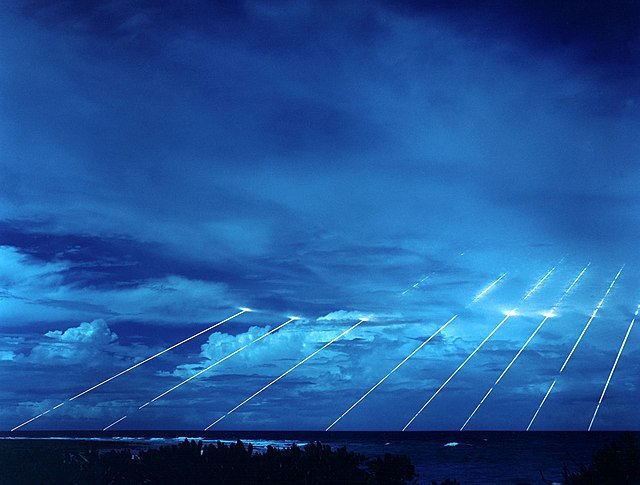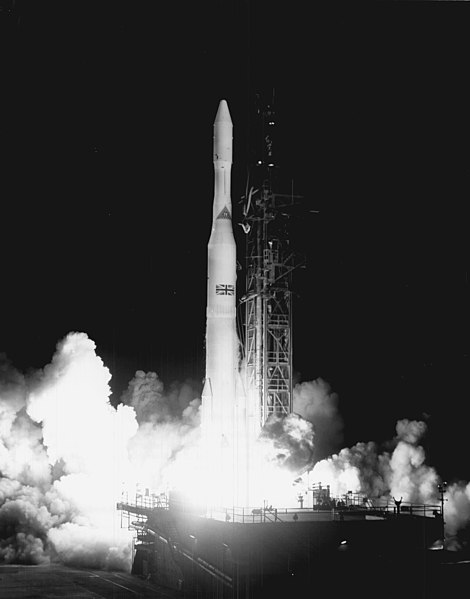Project A119, also known as A Study of Lunar Research Flights, was a top-secret plan developed in 1958 by the United States Air Force. The aim of the project was to detonate a nuclear bomb on the Moon, which would help in answering some of the mysteries in planetary astronomy and astrogeology. If the explosive device detonated on the surface, and not in a lunar crater, the flash of explosive light would have been faintly visible to people on Earth with their naked eye. This was meant as a show of force resulting in a possible boosting of domestic morale in the capabilities of the United States, a boost that was needed after the Soviet Union took an early lead in the Space Race.
Cover of A Study of Lunar Research Flights – Volume I
The explosion was intended to occur along the Moon's terminator, for maximum visibility from Earth.
The militarisation of space involves the placement and development of weaponry and military technology in outer space. The early exploration of space in the mid-20th century had, in part, a military motivation, as the United States and the Soviet Union used it as an opportunity to demonstrate ballistic-missile technology and other technologies having the potential for military application. Outer space has since been used as an operating location for military spacecraft such as imaging and communications satellites, and some ballistic missiles pass through outer space during their flight. As of 2018, known deployments of weapons stationed in space include only the Almaz space-station armament and pistols such as the TP-82 Cosmonaut survival pistol.
A Ground-Based Interceptor, designed to destroy incoming Intercontinental ballistic missiles, is lowered into its silo at the missile defence complex at Fort Greely, Alaska, July 22, 2004.
Test of the LG-118A Peacekeeper missile, each one of which could carry 10 independently targeted nuclear warheads along trajectories outside of the Earth's atmosphere.
A Lightweight Exo-Atmospheric Projectile (LEAP), which attaches to a modified SM-2 Block IV missile used by the U.S. Navy
Launch of the first Skynet satellite






